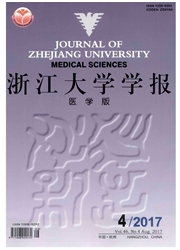

 中文摘要:
中文摘要:
颞叶癫痫是一种严重的慢性中枢系统疾病,难治性比例非常高,它不仅会损害海马的结构功能,还会影响海马齿状回区的成体神经再生。颞叶癫痫模型研究表明,海马齿状回区的内源性神经干细胞在癫痫持续状态后会迅速激活,神经再生水平显著提高,而在癫痫发作后期(慢性期)神经元再生水平降低至正常水平以下;另外,癫痫持续状态后产生并分化成熟的颗粒细胞会存在异常的形态和位置,并有可能异常整合到海马神经环路并对癫痫的形成和发作产生影响。然而,癫痫后的成体神经再生对于癫痫是利是弊仍存在较大争议。本文对近年来颞叶癫痫后成体神经再生的数量、形态和功能的研究进展进行综述,讨论成体神经再生在癫痫形成和病理机制中扮演的角色,为日后临床上以成体神经再生作为癫痫治疗调控的新靶点研究提供借鉴。
 英文摘要:
英文摘要:
Temporal lobe epilepsy (TLE) is a common and severe neurological disorder which is often intractable. It can not only damage the normal structure and function of hippocampus, but also affect the neurogenesis in dentate gyms (DG). It is well documented from researches on the animal models of TLE that after a latent period of several days, prolonged seizure activity leads to a dramatic increase in mitotic activity in the hippocampal DG. However, cell proliferation returns to baseline levels within 3-4 weeks after status epileptieus (SE). Meanwhile, there are two major abnormalities of DG neurogenesis, including the formation of hilar basal dendrites and the ectopie migration of newborn granule cells into the polymorphic cell layer, which may affect epileptogenesis and seizure onset. However, the specific contribution of these abnormalities to seizures is still unknown. In other words, whether they are anti- epileptic or proepileptic is still under heated discussion. This article systematically reviews current knowledge on neurogenesis and epilepsy based on the results of studies in recent years and discusses the possible roles of neurogenesis in epileptogenesis and pathologic mechanisms, so as to provide information for the potential application of neurogenesis as a new clinical therapeutic target for temporal lobe epilepsy.
 同期刊论文项目
同期刊论文项目
 同项目期刊论文
同项目期刊论文
 期刊信息
期刊信息
